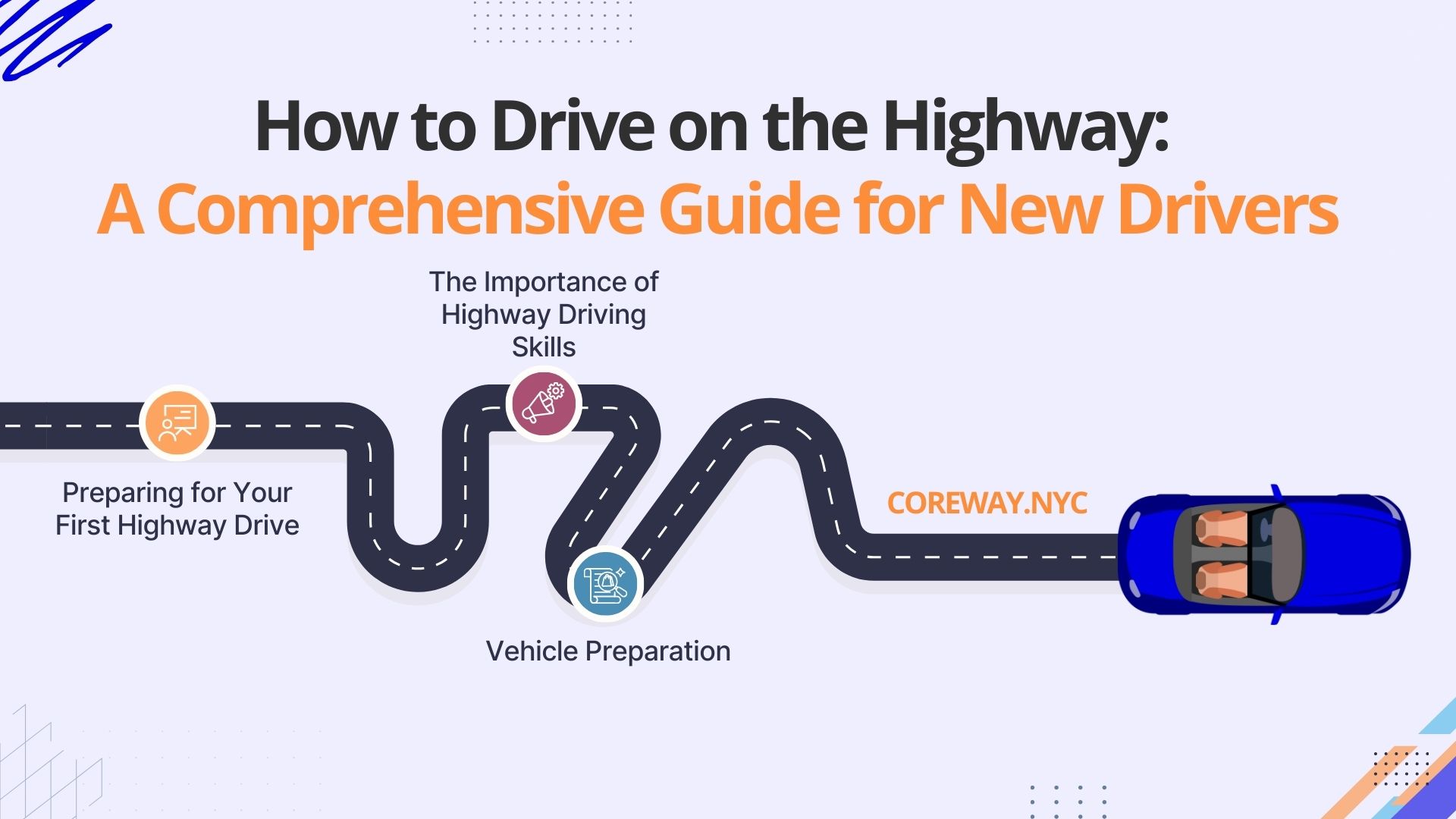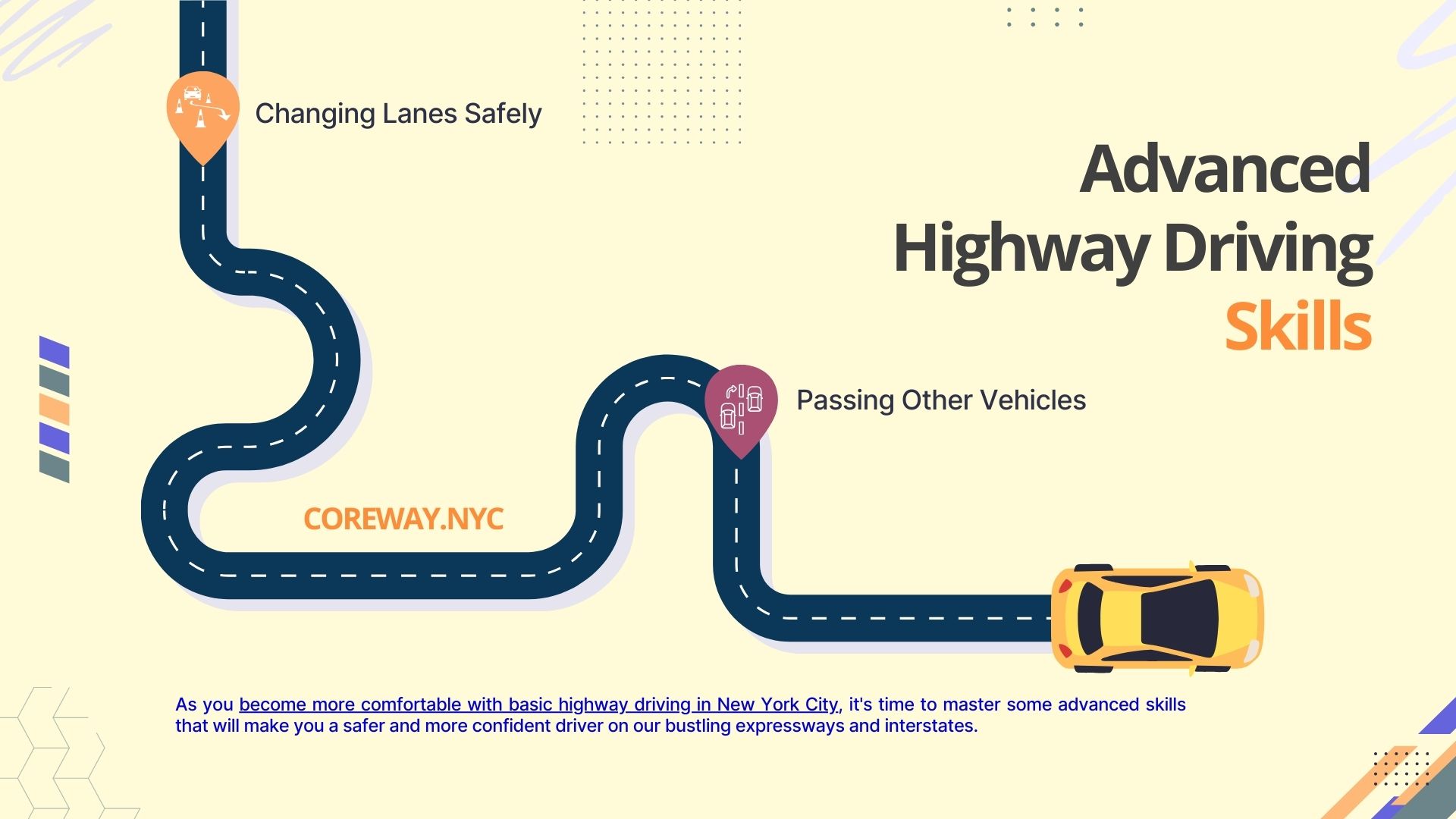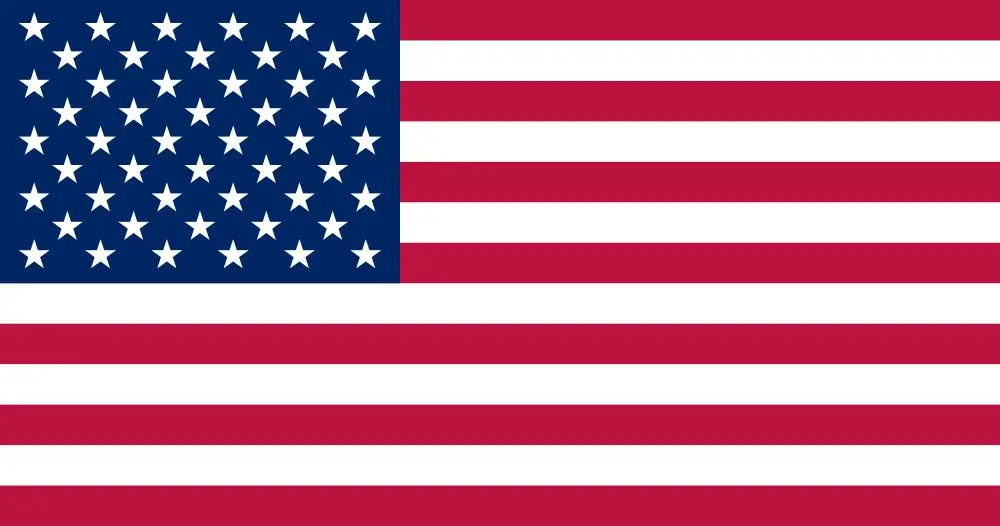How to Drive on the Highway: A Comprehensive Guide for New Drivers

Table of Contents
- The Importance of Highway Driving Skills
- Preparing for Your First Highway Drive
- Entering the Highway
- Driving on the Highway
- Advanced Highway Driving Skills
- Navigating Special Highway Situations
- Exiting the Highway
- Safety Tips for Highway Driving
- Highway Driving for New Drivers
- Conclusion
- Additional Resources
As a seasoned NYC driving instructor, I've guided countless new drivers through the challenging process of mastering highway driving. Whether you're preparing for your road test or simply want to build confidence on the busy streets of New York, understanding how to navigate highways is crucial. In this comprehensive guide, we'll explore everything you need to know about freeway driving, from preparation to execution.
The Importance of Highway Driving Skills
In the bustling metropolis of New York City, where the streets are a complex web of local roads, expressways, and interstates, mastering highway driving is not just a skill - it's a necessity. The ability to confidently merge onto the Brooklyn-Queens Expressway or navigate the busy lanes of the Long Island Expressway can make the difference between a stressful commute and a smooth journey.
Highway driving is a fundamental part of your driver education, and it's a skill that requires practice and patience to perfect. As you progress from local streets to multi-lane freeways, you'll need to adapt to higher speeds, manage longer distances, and interact with a diverse range of vehicles and driving styles.
Understanding the Terminology: Highway vs. Freeway vs. Interstate
Before we dive into the specifics of highway driving, let's clarify some common terms:
- Highways: These are major public roads that connect cities and towns. In NYC, think of the FDR Drive or the West Side Highway.
- Freeways: These are highways without toll booths, traffic lights, or intersections. The Cross Bronx Expressway is a prime example.
- Interstates: These are federally funded highways that connect multiple states. The I-95, which runs through the Bronx, is part of this system.
While these terms are often used interchangeably, understanding the subtle differences can help you navigate more effectively and interpret traffic reports accurately.
Preparing for Your First Highway Drive
Choosing the Right Time and Conditions
As a new driver in New York City, timing is everything when it comes to your first highway experience. The key is to start with conditions that allow you to focus on your driving skills without the added stress of heavy traffic or poor visibility.
Avoiding Rush Hour Traffic
New York's highways can be intimidating even for experienced drivers during peak hours. For your first highway drive, aim for a time when traffic is lighter. In NYC, this typically means:
- Weekdays: Between 10 AM and 3 PM
- Weekends: Early mornings (before 10 AM) or late evenings (after 7 PM)
Remember, each highway has its own traffic patterns. The Belt Parkway, for instance, might be less congested on a Saturday morning compared to the Van Wyck Expressway.
Checking Weather Conditions
New York's weather can be unpredictable, and adverse conditions can significantly impact highway driving. Before heading out:
- Check the local weather forecast
- Avoid driving in heavy rain, snow, or fog for your first highway experience
- If possible, choose a clear, sunny day for optimal visibility
Vehicle Preparation
Ensuring your vehicle is in good condition is crucial for safe highway driving. This is especially important in NYC, where the stop-and-go traffic can put extra strain on your car.
Basic Maintenance Checks
Before your highway debut, perform these essential checks:
- Tire pressure and tread depth
- Oil and coolant levels
- Brake fluid
- Windshield washer fluid
If you're unsure about any of these, consider visiting one of NYC's many certified auto shops for a quick inspection.
Ensuring Good Visibility
Clear visibility is paramount on high-speed roads. Make sure:
- Your windshield is clean, inside and out
- Windshield wipers are in good condition
- All lights (headlights, taillights, turn signals) are functioning properly
- Mirrors are properly adjusted
Remember, in New York, it's the law to have your headlights on when your windshield wipers are in use, so make this a habit from the start.
Entering the Highway
As a driving instructor in New York City, I've seen many students feel anxious about merging onto highways like the Brooklyn-Queens Expressway or the Major Deegan. But with the right techniques, entering a highway can be smooth and stress-free.
Understanding Entrance Ramps
Entrance ramps, also known as on-ramps, are the gateway to the highway. In NYC, these can vary significantly in length and design. For instance, the entrance ramps to the Cross Bronx Expressway are often shorter and require quicker acceleration compared to those leading to the Long Island Expressway.
The purpose of an entrance ramp is twofold:
- To give you space to accelerate and match the speed of highway traffic
- To provide a clear view of oncoming traffic so you can find a safe gap to merge
Proper Merging Techniques
One of the most crucial aspects of highway driving is entering at the right speed. As you drive down the entrance ramp:
- Begin accelerating as soon as you're on the ramp
- Aim to reach highway speed by the time you reach the end of the ramp
- Use the acceleration lane (if available) to fine-tune your speed
Remember, on busy NYC highways like the FDR Drive, entering too slowly can be just as dangerous as entering too quickly.
Using Turn Signals Effectively
In the hustle and bustle of New York traffic, clear communication with other drivers is key. Always use your turn signal to indicate your intention to merge. Activate it early - ideally as soon as you enter the entrance ramp. This gives highway drivers ample time to adjust their speed or change lanes to accommodate you.
Right-of-Way Rules When Merging
In New York State, vehicles already on the highway have the right of way. This means you must yield to highway traffic when merging. However, courteous drivers will often move over or adjust their speed to let you in, especially in heavy traffic situations common on NYC highways.
Call Us Today 6AM-10PM
Or fill out the form 24/7
Our team is here to guide you with promotions, instructor availability, and the best training package for you.
Driving on the Highway

Once you've successfully merged, it's time to navigate the highway itself. This requires a different set of skills compared to city driving.
Maintaining Appropriate Speed Limits
In New York City and the surrounding areas, highway speed limits typically range from 50 to 65 mph. However, it's crucial to remember that these are maximum speeds under ideal conditions. Always adjust your speed based on traffic, weather, and road conditions.
For example:
- The speed limit on the FDR Drive is 40 mph
- The New Jersey Turnpike has variable speed limits that change based on traffic conditions
- School zones on parkways like the Belt Parkway have reduced speed limits during school hours
Adjusting Speed for Conditions
New York's highways can quickly become congested, especially during rush hours or when there's an incident. Be prepared to adjust your speed accordingly:
- In heavy traffic, maintain a steady pace with the flow
- During inclement weather, reduce your speed to maintain control
- In construction zones, always obey the posted speed limits
Lane Selection and Usage
Proper lane usage is crucial for smooth traffic flow and safety on multi-lane highways like the New England Thruway or the Long Island Expressway.
Right Lane for Slower Traffic
In general, stick to the right lane if you're traveling at or below the speed limit. This lane is also used by vehicles entering and exiting the highway, so be prepared for more frequent speed adjustments.
Left Lane for Passing
The left lane, often called the "fast lane," is primarily for passing. In New York, it's actually illegal to continuously drive in the left lane if you're not actively passing other vehicles. This helps maintain traffic flow and reduces congestion.
Safe Following Distance
Maintaining a safe distance from the vehicle in front of you is crucial, especially at highway speeds.
The Three-Second Rule
To ensure you're keeping a safe distance:
- Choose a fixed point ahead, like a road sign
- When the car in front of you passes that point, start counting
- You should reach at least three seconds before your car passes the same point
In NYC's often congested highways, maintaining this distance can be challenging but is essential for safety.
Adjusting for Adverse Conditions
Increase your following distance to four or more seconds when:
- Driving in rain or snow
- Following a large vehicle that blocks your view
- Driving at night
Call Us Today 6AM-10PM
Or fill out the form 24/7
Our team is here to guide you with promotions, instructor availability, and the best training package for you.
Advanced Highway Driving Skills

As you become more comfortable with basic highway driving in New York City, it's time to master some advanced skills that will make you a safer and more confident driver on our bustling expressways and interstates.
Changing Lanes Safely
Lane changes are a critical skill on multi-lane highways like the Cross Bronx Expressway or the Long Island Expressway. In NYC's often dense traffic, smooth and safe lane changes are essential.
Checking Blind Spots
Before changing lanes:
- Check your rearview mirror
- Check the appropriate side mirror
- Quickly glance over your shoulder to check your blind spot
Remember, larger vehicles like the many delivery trucks and buses in NYC have larger blind spots. Always be extra cautious when changing lanes near these vehicles.
Using Turn Signals
In New York State, you're required by law to signal for at least 100 feet before changing lanes. On highways, where speeds are higher, it's wise to signal for even longer. This gives other drivers time to anticipate and react to your movement.
Passing Other Vehicles
Passing safely is a crucial skill, especially on two-lane highways like portions of the Taconic State Parkway.
When and How to Pass Safely
Only pass when:
- It's legal (look for signs and road markings)
- You have a clear view of oncoming traffic
- You can complete the pass without exceeding the speed limit
When passing:
- Signal your intention
- Accelerate and move into the passing lane
- Pass quickly but safely
- Signal and return to your original lane once you can see the passed vehicle in your rearview mirror
State Laws on Passing on the Right
In New York, passing on the right is legal only under certain conditions, such as:
- When the vehicle ahead is making a left turn
- On roads with two or more lanes in each direction
However, it's generally safer to pass on the left, especially on highways.
Navigating Special Highway Situations
New York's highways present unique challenges that drivers must be prepared to handle.
Dealing with Construction Zones
Construction is a constant presence on NYC highways. The Brooklyn-Queens Expressway, for instance, seems to be in a perpetual state of repair.
Reduced Speed Limits
Always obey reduced speed limits in construction zones. In New York, fines for speeding in work zones are doubled, and multiple violations can result in license suspension.
Navigating Lane Closures
When approaching a lane closure:
- Merge early when you first see the signs
- Use the "zipper merge" technique in heavy traffic, taking turns with other drivers to merge at the point where the lane ends
Handling Emergency Vehicles
New York law requires you to move over or slow down for stopped emergency vehicles with flashing lights. This "Move Over" law applies to highways and parkways throughout the state.
When you see or hear an emergency vehicle approaching:
- Slow down
- Move to the right side of the road if possible
- Stop if the emergency vehicle is behind you and can't pass
Coping with Aggressive Drivers and Road Rage
Unfortunately, aggressive driving is not uncommon on NYC highways. To stay safe:
- Don't engage with aggressive drivers
- Maintain a safe following distance
- Use turn signals consistently to communicate your intentions
- If you feel threatened, exit the highway if it's safe to do so
Exiting the Highway
Knowing how to exit the highway safely is just as important as knowing how to enter it.
Planning Your Exit in Advance
In NYC, exits can come up quickly, especially on older highways like the Gowanus Expressway.
- Know your exit number and watch for signs
- Move to the right lane well in advance of your exit
- If you miss your exit, never back up or make a U-turn on the highway
Proper Use of Exit Ramps
Exit ramps on NYC highways can vary greatly in length and curvature. The tight spiral of the Brooklyn Bridge exit onto the FDR Drive, for example, requires significant speed reduction.
- Begin slowing down as you enter the exit ramp
- Watch for posted speed limits on the ramp
- Be prepared for stops at the end of the ramp
Adjusting Speed When Leaving the Highway
As you transition from highway to local roads:
- Gradually reduce your speed
- Increase your following distance
- Be prepared for traffic lights or stop signs at the end of the exit ramp
Safety Tips for Highway Driving
Safety should always be your top priority when driving on New York's highways. Let's explore some crucial safety tips that will help you navigate our busy expressways with confidence.
Avoiding Distractions
Distracted driving is a leading cause of accidents on NYC highways. The fast-paced nature of highway driving demands your full attention.
Cell Phone Usage
New York has strict laws regarding cell phone use while driving. It's illegal to use a handheld mobile device while driving, including when stopped at traffic lights. This applies to all highways, from the bustling Cross Bronx Expressway to the scenic Taconic State Parkway.
- Use hands-free devices if you must take a call
- Better yet, let calls go to voicemail and return them when you're safely parked
- Never text while driving – it's both illegal and extremely dangerous
Other Common Distractions
While cell phones are a major concern, they're not the only distraction:
- Avoid eating or drinking while driving
- Set your GPS and select your music before starting your journey
- If traveling with pets, ensure they're properly secured
Staying Alert and Focused
Long stretches of highway driving can lead to fatigue, especially on routes like the New York State Thruway.
Recognizing Signs of Fatigue
Be aware of signs that you're too tired to drive safely:
- Difficulty focusing or frequent blinking
- Drifting from your lane
- Missing exits or traffic signs
If you notice these signs, it's time to take a break.
Taking Breaks on Long Trips
When planning a long trip:
- Schedule breaks every two hours or 100 miles
- Use rest areas along highways like I-87 or I-95 for short naps if needed
- Stay hydrated and avoid heavy meals that can make you drowsy
Defensive Driving Techniques
Defensive driving is crucial on NYC highways, where conditions can change rapidly.
- Anticipate other drivers' actions
- Always have an escape route planned
- Maintain a space cushion around your vehicle
Consider taking a defensive driving course – it can even lower your insurance premiums in New York State.
Handling Emergency Situations
Being prepared for emergencies can make a significant difference in the outcome.
Vehicle Breakdowns
If your vehicle breaks down on a NYC highway:
- Safely maneuver to the right shoulder if possible
- Turn on your hazard lights
- Stay in your vehicle with seatbelts fastened
- Call for assistance (keep the number for NYS Thruway Authority's emergency services handy)
Accidents
If you're involved in an accident:
- Move to a safe area if possible
- Check for injuries and call 911 if needed
- Exchange information with other drivers involved
- Document the scene with photos if it's safe to do so
Highway Driving for New Drivers
As a new driver in New York City, highway driving can seem daunting. Here's how to build your confidence and skills.
Overcoming Anxiety
It's normal to feel anxious about highway driving at first. To manage this:
- Start with shorter trips on less busy highways
- Practice deep breathing techniques to stay calm
- Remember that everyone was a new driver once
Practical Tips for Building Confidence
- Begin with highways you're familiar with as a passenger
- Drive during off-peak hours initially
- Gradually increase the duration and complexity of your highway trips
Importance of Highway Driving Lessons
Many NYC driving schools offer specialized highway driving lessons. These can be invaluable for new drivers, providing hands-on experience with expert guidance. Look for schools that offer practice on a variety of highways, from the Belt Parkway to the Henry Hudson Parkway.
Conclusion
Mastering highway driving is an essential skill for any New York City driver. From navigating the complex interchanges of the Cross Bronx Expressway to handling the high-speed traffic of the Long Island Expressway, the skills you've learned in this guide will serve you well.
Remember, becoming a confident highway driver takes time and practice. Be patient with yourself, always prioritize safety, and don't hesitate to seek additional training if you need it. With experience, you'll find that highway driving can be an efficient and even enjoyable way to navigate our great city and beyond.
Stay safe on the roads, New York!
Additional Resources
To further enhance your highway driving skills and knowledge:
- Visit the New York State DMV website for the latest traffic laws and regulations
- Consider taking a defensive driving course from a state-approved provider
- Check the NYS Thruway Authority website for real-time traffic updates and safety tips
- Explore local driving schools that offer specialized highway driving lessons
Call Us Today 6AM-10PM
Or fill out the form 24/7
Our team is here to guide you with promotions, instructor availability, and the best training package for you.
Frequently Asked Questions: Highway Driving in NYC for New Drivers
-
At what age can I start driving on highways in NYC?
In New York, you can drive on highways once you have a full driver's license. You can obtain this at age 17 if you've completed a driver education course, or at 18 without the course. However, if you have a learner's permit, you can practice highway driving under the supervision of a licensed driver who is at least 21 years old.
-
Do I need special training to drive on NYC highways?
While there's no legal requirement for special highway training, many NYC driving schools offer specific highway driving lessons. These can be extremely beneficial for building confidence and skills in high-speed, high-traffic situations. It's highly recommended for new drivers to take advantage of these specialized lessons.
-
What's the speed limit on NYC highways?
Speed limits on NYC highways can vary depending on the specific road. Generally, they range from 50 to 65 mph. For instance, the FDR Drive has a lower limit of 40 mph, while parts of the New York State Thruway allow speeds up to 65 mph. It's crucial to always check the posted signs, as limits can change due to construction or other factors.
-
How do I handle merging onto busy NYC highways like the BQE?
Merging onto busy highways like the Brooklyn-Queens Expressway (BQE) requires careful attention and timing. Use the on-ramp to accelerate to highway speed, and signal early to indicate your intention to merge. As you approach the end of the ramp, look for a gap in traffic and adjust your speed to fit into it. Remember to yield to vehicles already on the highway, but merge confidently when there's space. Practice and experience will make this process smoother over time.
-
What should I do if I miss my exit on a NYC highway?
If you miss your exit, the most important thing is to stay calm and keep driving. Never stop or back up on a highway - it's extremely dangerous and illegal. Instead, continue driving to the next exit, safely leave the highway, and then re-route yourself. Many NYC highways have closely spaced exits, so you usually won't have to go far out of your way.
-
How do I handle aggressive drivers on NYC highways?
When faced with aggressive drivers, the key is to remain calm and avoid engagement. Don't retaliate or try to "teach them a lesson." Instead, maintain a safe distance and focus on your own driving. If you feel threatened, consider taking the nearest exit if it's safe to do so. In serious situations, you can call 911 or *55 for State Police assistance. Remember, your safety is the top priority.
-
Are there any NYC highways I should avoid as a new driver?
As a new driver, it's wise to gradually build your experience on all types of roads. Initially, you might want to avoid the most complex and busiest highways during peak hours. The Cross Bronx Expressway and the Long Island Expressway during rush hour, for example, can be challenging even for experienced drivers. Start with less congested highways during off-peak hours and progressively work your way up to busier routes as your confidence grows.
-
How do I prepare my car for highway driving in NYC?
Preparing your car for highway driving in NYC involves several important checks. Ensure all lights and signals are working properly. Check your tire pressure and tread depth, as well as the condition of your brakes. It's a good practice to keep your gas tank at least a quarter full. Consider keeping an emergency kit in your car with essentials like a flashlight, basic tools, and a first-aid kit. Regular maintenance checks can help prevent breakdowns and ensure a safer driving experience.
-
What should I do if my car breaks down on an NYC highway?
If your car breaks down on an NYC highway, safety should be your primary concern. Try to pull over to the right shoulder if possible. Immediately turn on your hazard lights to make your vehicle visible to other drivers. It's safest to stay in your car with seatbelts fastened. Call for assistance; keep the number for NYS Thruway Authority's emergency services handy. If you absolutely must exit the vehicle, do so from the passenger side to avoid traffic.
-
How can I practice highway driving safely in NYC?
Practicing highway driving safely in NYC involves a gradual approach. Start by having a licensed driver accompany you for your initial highway experiences. Choose times when traffic is lighter, typically during off-peak hours. Begin with less busy highways and gradually increase the duration and complexity of your trips as you gain confidence. Many new drivers find it helpful to take professional lessons that include highway driving. Remember, becoming comfortable with highway driving takes time and practice, so don't rush the process and always prioritize safety over speed or convenience.
 English
English Spanish
Spanish 

